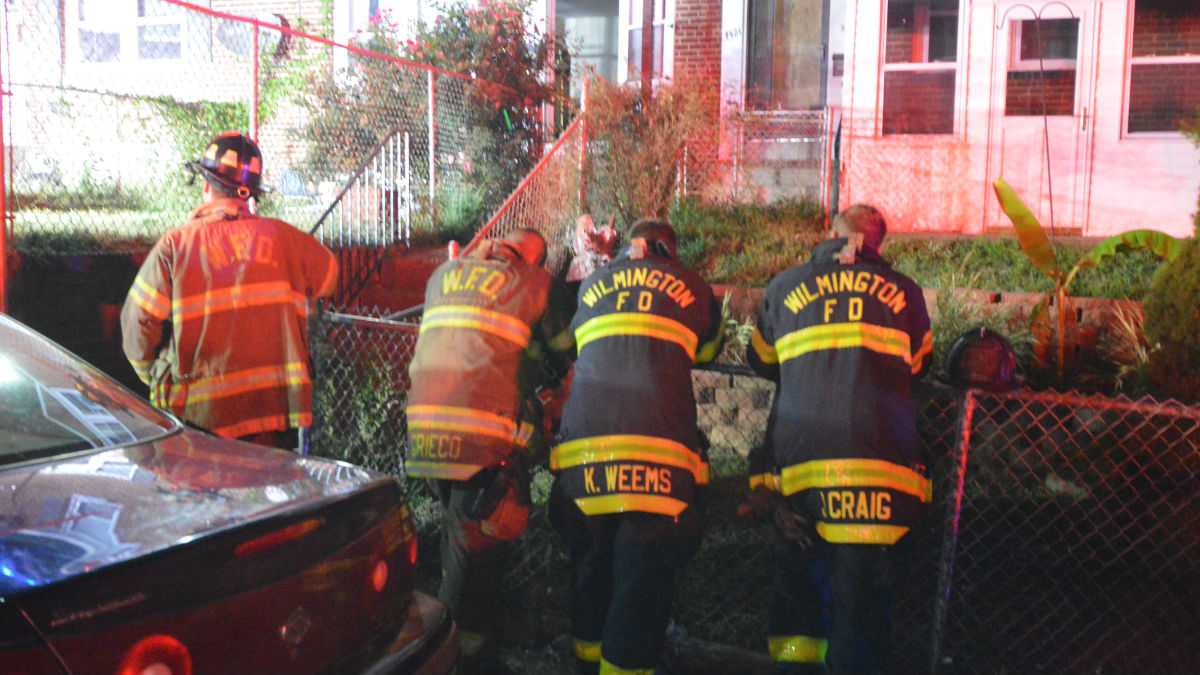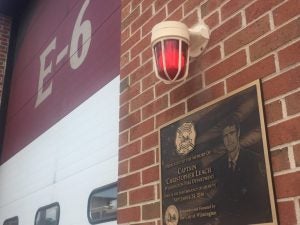Federal report cites litany of errors in blaze that killed 3 Wilmington firefighters
Listen 1:00
Firefighters rest on a fence outside the home where Wilmington firefighters were killed in September 2016. (John Jankowski/for NewsWorks)
The deaths of three Wilmington firefighters in a row home blaze more than two years ago is the subject of a federal lawsuit about city management of the department.
Now U.S. authorities have weighed in, and their report is damning.
While the lawsuit focuses on the lack of manpower and the use of “rolling bypasses’’ that put the closest water-carrying engine truck out of service that fateful night, investigators from the National Institute for Occupational Safety and Health found a host of failures in how city firefighters handled the chaotic scene that night and in how they are trained.
Soon after arriving at the blaze about 3 a.m. on Sept. 24, 2016, Christopher Leach, Jerry Fickes and Ardythe Hope rushed into the home because they feared one or more people might be trapped inside. One commander had learned within the previous minute, however, that all the occupants were out, the report said.
The arson fire started in the basement. A couple of minutes after firefighters entered, the blaze caused the first and second floors to collapse.
The federal report essentially said the three were doomed. Factors that contributed to their deaths included poor communications, no incident action plan and poor tactics for fighting a basement fire, and improper training, the report said.
The institute, which is part of the U.S. Centers for Disease Control and Prevention, issued 19 recommendations to address those shortcomings. The report stressed that no one should have entered the house until a tactical plan to attack the flames was established.

“The strategy and incident action plan [tactics] of an incident are dictated by the size-up, initial risk assessment, and situational report by the first arriving officer,” the report said.
“The priority is to get fire department resources to [the rear of the building, where the fire started in the basement] as quickly as possible. However, unless an obvious life safety issue exists [e.g., visible victims requiring immediate assistance], interior firefighting operations should not commence until a report from [the rear] is received.”
The report added that “activities that present a significant risk to the safety of firefighters shall be limited to situations that have the potential to save endangered lives.”
The report mentioned that one engine truck was mothballed that night, but said, “The impact of Engine 6 being out of service is unknown.”
Attorney Thomas Neuberger, who is suing the city on behalf of the fallen firefighters and their families, said he is not surprised that federal investigators found so many mistakes occurred when the trucks arrived.
“These are matters of great public concern,’’ Neuberger said. “The report from the feds is saying this is what you have to do to have a better fire department. These things need to be considered, need to be adopted. The public needs to make sure the city implements these changes.”
Wilmington officials released a statement saying the report “speaks for itself.’’ The city did not immediately commit to making changes but said officials are “reviewing’’ the report.
Federal report on blaze that killed three Wilmington firefighters by Anonymous zikimQM on Scribd
WHYY is your source for fact-based, in-depth journalism and information. As a nonprofit organization, we rely on financial support from readers like you. Please give today.





